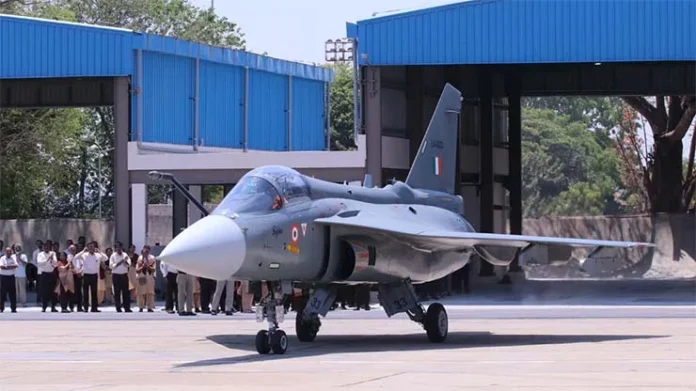New Delhi: Hindustan Aeronautics Limited (HAL) achieved a landmark in India’s indigenous defence manufacturing by receiving the first wing assemblies for the Tejas MK-1A from Larsen & Toubro (L&T) at L&T’s Precision Manufacturing & Systems Complex in Coimbatore, Tamil Nadu.
The ceremony was attended in person by HAL’s General Manager (Tejas Division), M Abdul Salam, and joined virtually by Secretary (Defence Production) Sanjeev Kumar, who lauded this public-private collaboration as a vital step in India’s quest for self-reliance in defence production.
Secretary Sanjeev Kumar commended both HAL and L&T for their close cooperation, highlighting the event as a concrete move toward reducing India’s reliance on foreign suppliers for defence technology. He expressed confidence in India’s ability to meet ambitious production targets for the Tejas fighter, emphasising that such partnerships are critical to achieving the national vision of Aatmanirbhar Bharat (self-reliant India).
HAL Chairman and Managing Director Dr. DK Sunil described the delivery as the culmination of years of partnership and support, noting that HAL has actively involved both large and small enterprises in the Tejas program.
This collaboration has led to the successful establishment of a parallel aircraft structure assembly line in the private sector, marking a significant leap in production capacity. The move is expected to boost the scale and speed of the Tejas programme, enabling faster and more robust output to meet the needs of the Indian Air Force (IAF).
L&T’s Senior Vice President and Head of Precision Engineering & Systems, Arun Ramchandani, outlined the company’s immediate and future commitments to wing production.
Initially, L&T will supply four wing sets per year, with plans to increase output to 12 sets annually as automation and advanced assembly techniques are phased in. L&T’s manufacturing prowess was demonstrated through the use of advanced technologies such as automated fibre placement, autoclave curing, and ultrasonic drilling, ensuring the wing assemblies meet precise aerospace standards required for combat jets like the Tejas MK-1A.
Notably, the automation of wing drilling—where each wing set requires approximately 8,000 holes—has drastically reduced production time by over 95%, further aiding HAL’s goal to deliver up to 16–18 Tejas MK-1A jets to the IAF each year.
HAL’s modular approach has expanded the ecosystem for indigenous defence manufacturing by involving several Indian firms providing critical sub-assemblies for the Tejas MK-1A.
The Tejas MK-1A represents a vital element in modernising India’s air combat fleet and reducing dependence on imported military aircraft. With advanced features such as an AESA radar and compatibility with modern weapons systems, the MK-1A version is central to the IAF’s modernisation and operational readiness.
The successful handover of the first wing assemblies from L&T, in addition to modules from other private firms, positions HAL to accelerate the final assembly and induction of Tejas jets, moving India closer to both production efficiency and strategic self-reliance.
This milestone demonstrates not only the technical capabilities of India’s private sector but also the effectiveness of collaborative manufacturing models in delivering high-end, indigenous defence solutions at scale.






